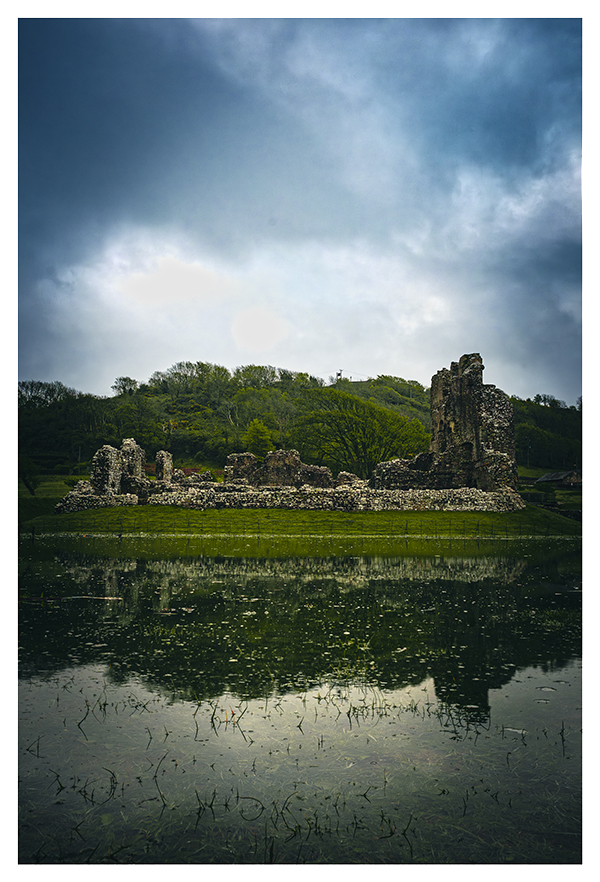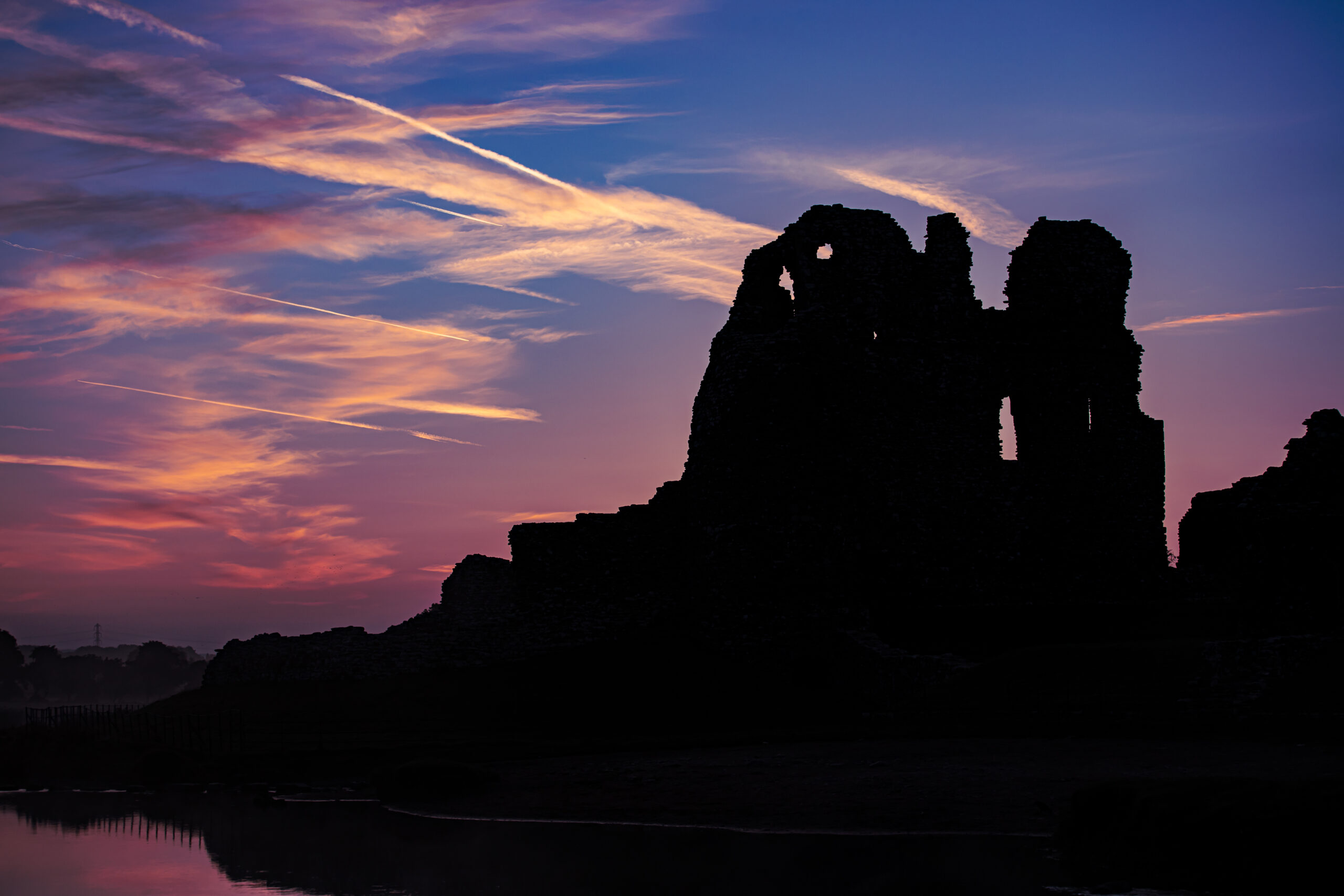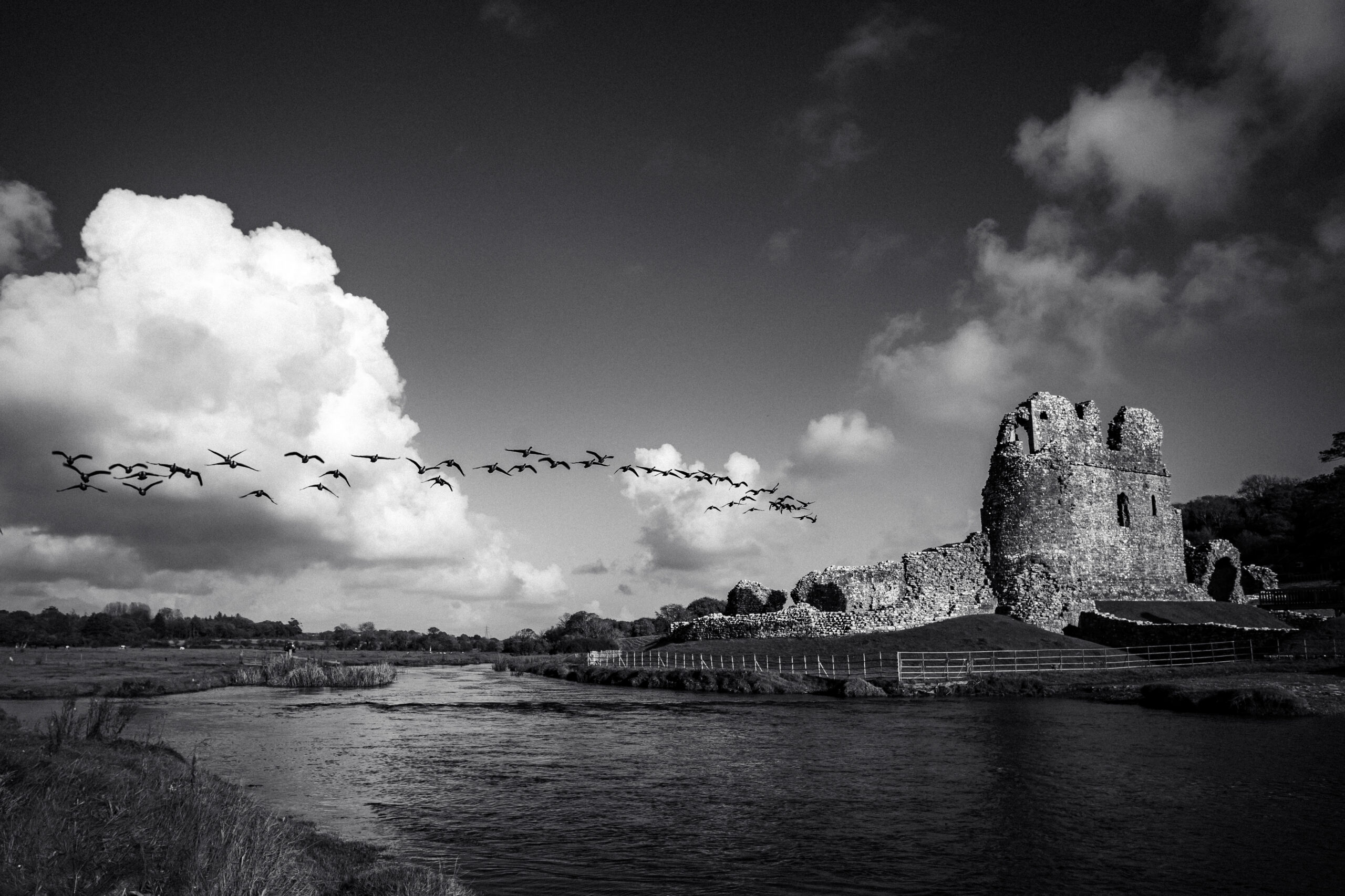
Ogmore Castle, situated near Bridgend in South Wales, is a captivating Norman ruin with a rich history dating back to the early 12th century. Established around 1116 by William de Londres, a follower of Robert FitzHamon, the castle was initially constructed as a timber ringwork to secure Norman control over the region. Following a Welsh uprising led by Rhys ap Tewdwr, which forced de Londres to temporarily abandon the site, the castle was soon reinforced with stone fortifications, including a rectangular keep built by William’s son, Maurice de Londres, after 1126. This keep, one of the earliest Norman stone structures in South East Wales, originally stood three stories high and served as the main residential and defensive stronghold of the castle.
Strategically located beside the River Ewenny, Ogmore Castle was designed with a tidal moat that filled with seawater at high tide, enhancing its defensive capabilities. The castle’s layout includes a curtain wall, gatehouse, and various domestic buildings, reflecting its evolution over the centuries. In 1297, through the marriage of Maud de Chaworth to Henry, 3rd Earl of Lancaster, the castle became part of the Duchy of Lancaster and subsequently Crown property in 1399. Though it suffered damage during the early 15th-century Welsh uprising led by Owain Glyndŵr, the castle was repaired and continued to serve administrative functions, with a courthouse operating on-site until the early 19th century. Today, the picturesque ruins of Ogmore Castle, maintained by Cadw, are freely accessible to visitors, offering a glimpse into the medieval past amidst the serene Welsh countryside.

